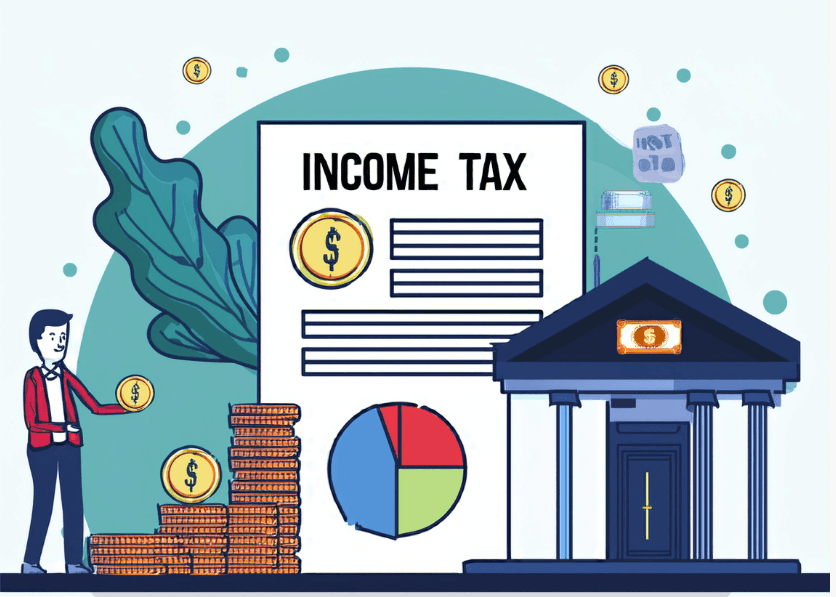
The Indian government has introduced revised income tax slabs for the FY 2025-26 (assessment year 2026-27) to provide significant relief to taxpayers. These changes, primarily under the new tax regime, aim to boost disposable income and drive economic growth.
Income Tax Slabs for FY 2025-26 (New Tax Regime)
The updated tax structure under the new tax regime is as follows:
| Annual Income (₹) | Tax Rate (%) |
|---|---|
| Up to 4,00,000 | Nil |
| 4,00,001 to 8,00,000 | 5% |
| 8,00,001 to 12,00,000 | 10% |
| 12,00,001 to 16,00,000 | 15% |
| 16,00,001 to 20,00,000 | 20% |
| 20,00,001 to 24,00,000 | 25% |
| Above 24,00,000 | 30% |
Key Highlights of the New Tax Regime
- Higher exemption limit: The tax-free income threshold has been raised to ₹4 lakh.
- Increase in rebate limit: Taxpayers with incomes up to ₹12.8 lakh will see a substantial reduction in their tax burden.
- Lower tax rates: Compared to the old tax regime, the new slabs offer reduced tax rates for various income levels.
Old Tax Regime: Should You Still Opt for It?
The old tax regime continues to be available for taxpayers who prefer to claim exemptions and deductions such as:
- Standard Deduction
- HRA (House Rent Allowance)
- 80C (Investments in PPF, EPF, LIC, etc.)
- 80D (Health Insurance Premiums)
If you have significant deductions, the old tax regime may still be beneficial. Learn more about RBI policy rates and how they impact financial planning.
Tax Calculation Using Income Tax Slabs for FY 2025-26
Here’s how tax liability is calculated under the new tax regime:
For ₹12,00,000 Salary
- Income up to ₹4,00,000: No tax
- ₹4,00,001 – ₹8,00,000 (5% of ₹4,00,000) = ₹20,000
- ₹8,00,001 – ₹12,00,000 (10% of ₹4,00,000) = ₹40,000
- Total Tax Before Rebate = ₹60,000
- Rebate under Section 87A = ₹75,000 (since income is under ₹12.8 lakh)
- Tax After Rebate = ₹0
- Cess (4%) = ₹0
- Final Tax Payable = ₹0
For ₹13,00,000 Salary
- Income up to ₹4,00,000: No tax
- ₹4,00,001 – ₹8,00,000 (5% of ₹4,00,000) = ₹20,000
- ₹8,00,001 – ₹12,00,000 (10% of ₹4,00,000) = ₹40,000
- ₹12,00,001 – ₹13,00,000 (15% of ₹1,00,000) = ₹15,000
- Total Tax Before Rebate = ₹75,000
- Rebate under Section 87A = ₹0 (since income exceeds ₹12.8 lakh)
- Tax After Rebate = ₹75,000
- Cess (4%) = ₹3,000
- Final Tax Payable = ₹78,000
Surcharge and Cess for FY 2025-26
- Surcharge: Remains applicable for income exceeding ₹50 lakh.
- Health and Education Cess: A standard 4% cess applies on the total tax payable.
How Will These Changes Benefit You?
- Middle-class savings: The new structure reduces tax liabilities, increasing disposable income.
- Boost to consumption: Lower taxes may encourage higher consumer spending, driving economic growth.
- Ease of compliance: The simplified new tax regime eliminates the need for extensive tax planning.
Frequently Asked Questions (FAQs)
1. What is the major difference between the old and new tax regimes?
The new tax regime offers lower tax rates but removes most exemptions and deductions, while the old tax regime allows exemptions like 80C, HRA, and standard deductions.
2. Can I switch between the old and new tax regimes?
Yes, salaried individuals can choose between the two regimes every financial year. However, business owners can switch only once in their lifetime.
3. Is it mandatory to opt for the new tax regime?
No, taxpayers have the choice to continue with the old regime if it is more beneficial for them.
4. How can I calculate my tax liability?
You can use an income tax calculator to estimate your tax payable under both regimes.
Final Thoughts: Which Tax Regime Should You Choose?
Your choice between the new vs. old tax regime depends on your income structure and eligible deductions. Taxpayers who rely on exemptions may prefer the old regime, while those seeking lower tax rates and simplified compliance may find the new regime beneficial.
For the latest updates on personal finance, visit our Banking Insights blog. Also, check out recent developments on gold rates in India for better financial planning.
Stay updated with the latest tax changes and financial insights at Banking Insights!
